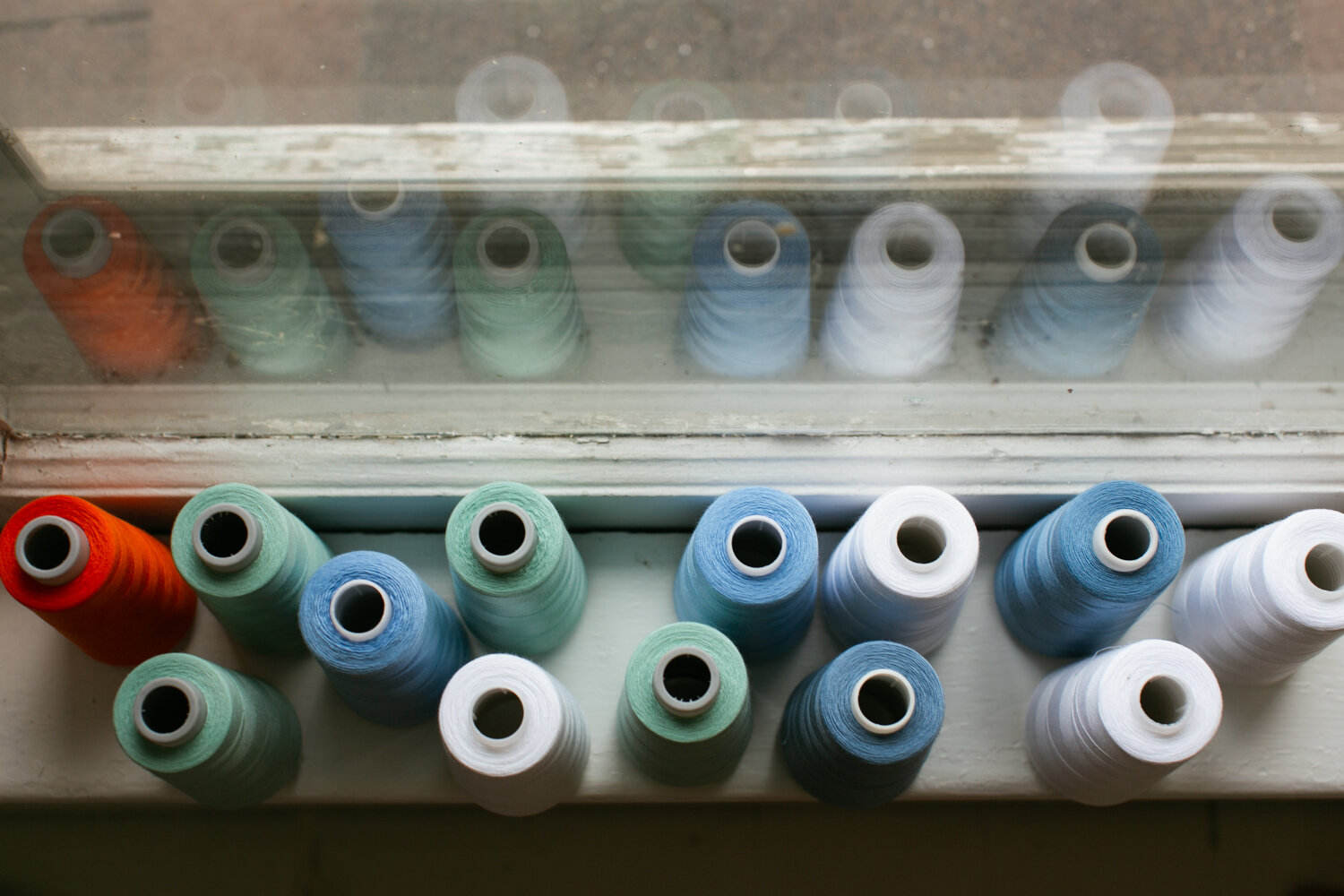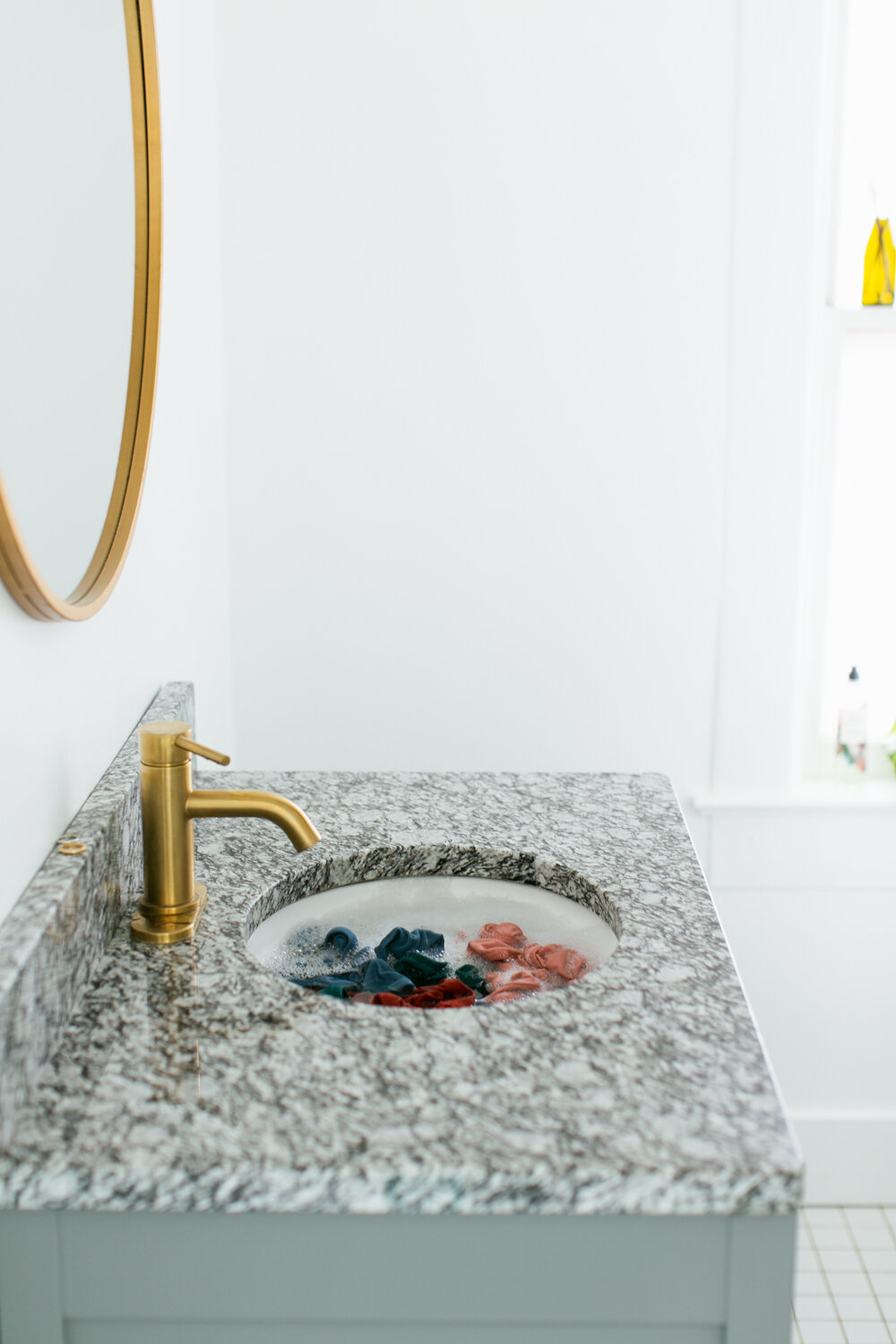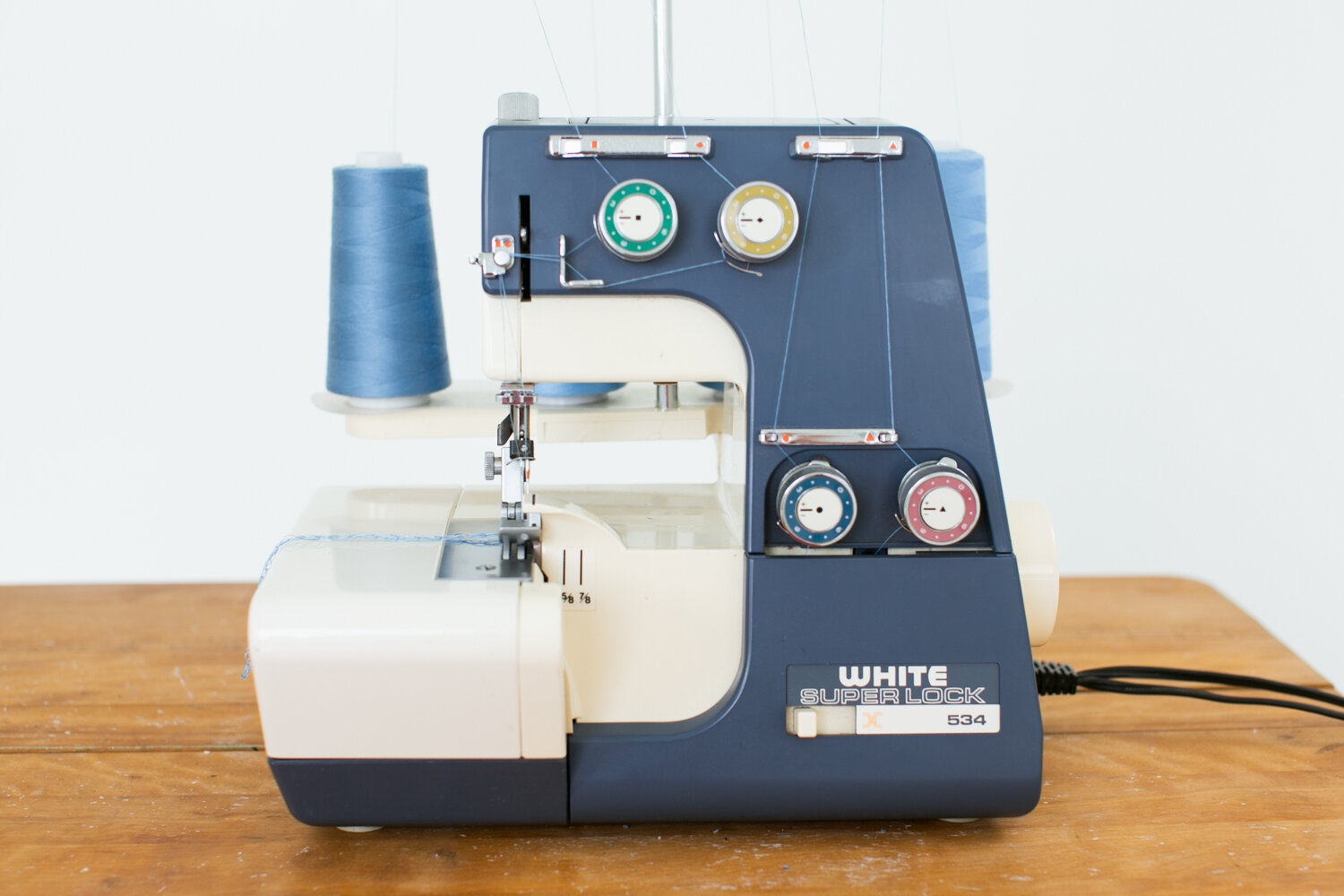Clothes always look better when you have matching serger thread. If you don’t have perfectly matching thread, you can put on a mixture of colors. For this pair of undies I couldn’t find matching serger thread at the fabric store. I loaded the serger with two orange spools and two bright red spools I had on hand.
Zoomed out view of current sewing space. Shooting tutorials in this bright, white, empty room.










































